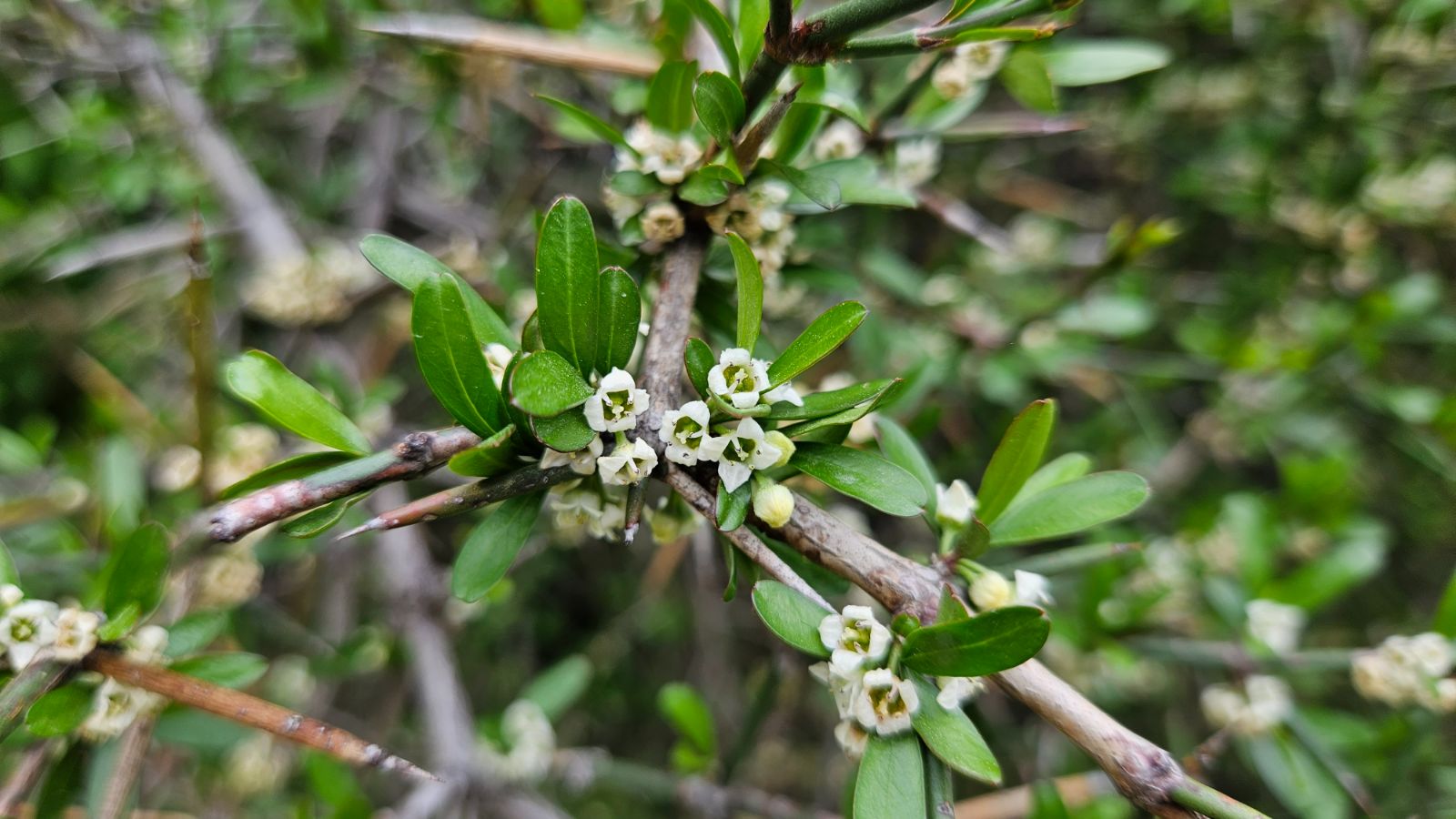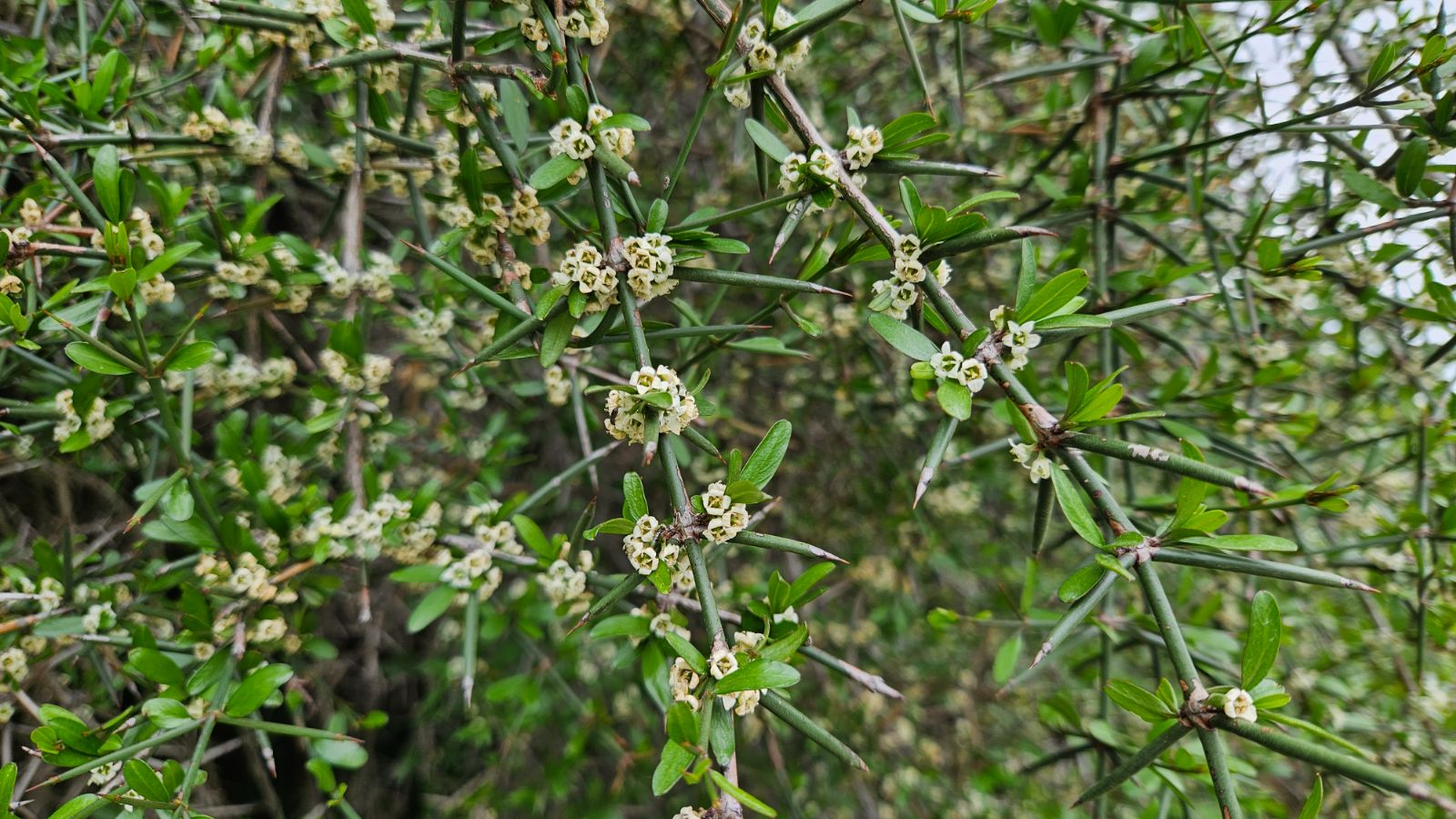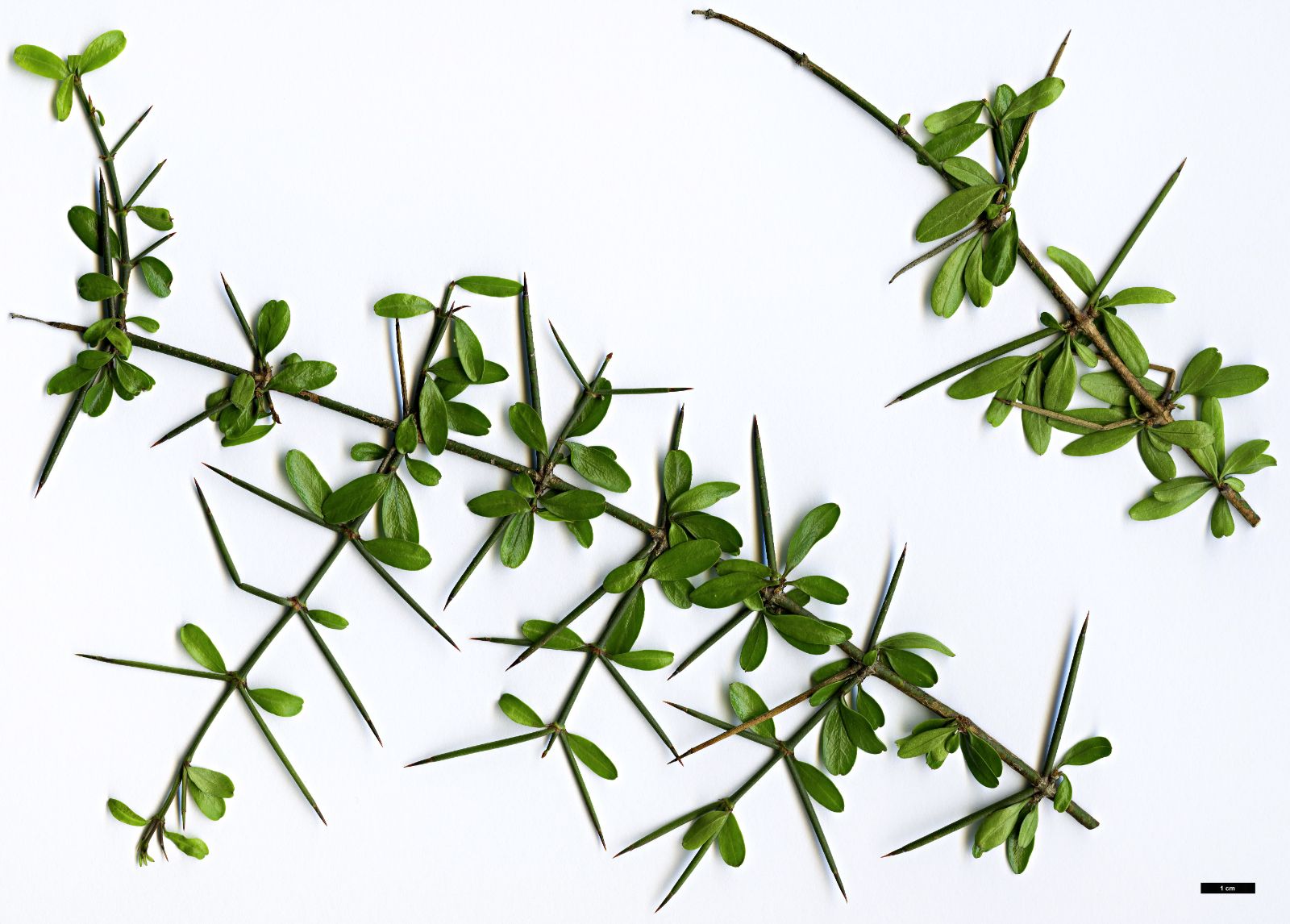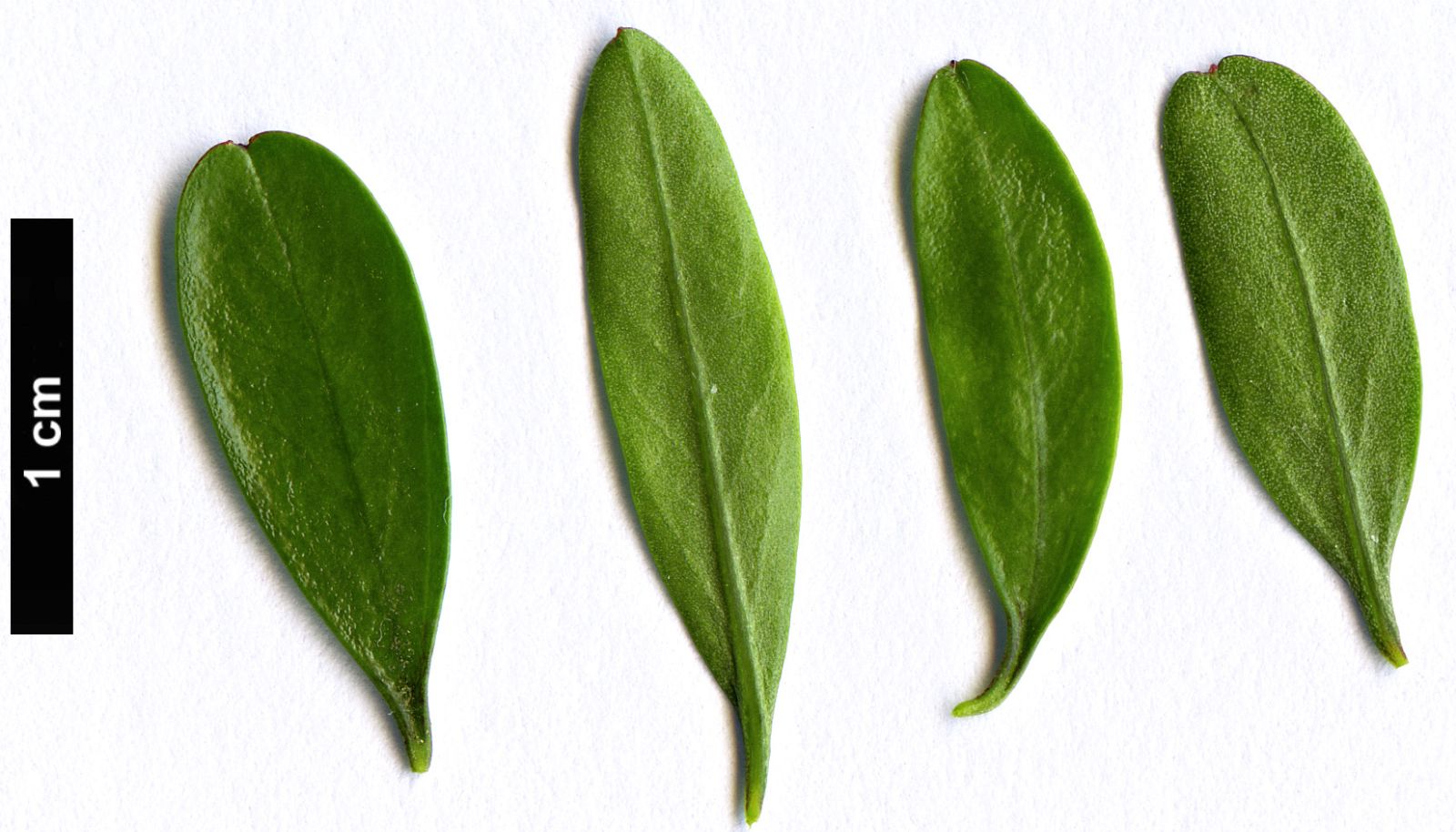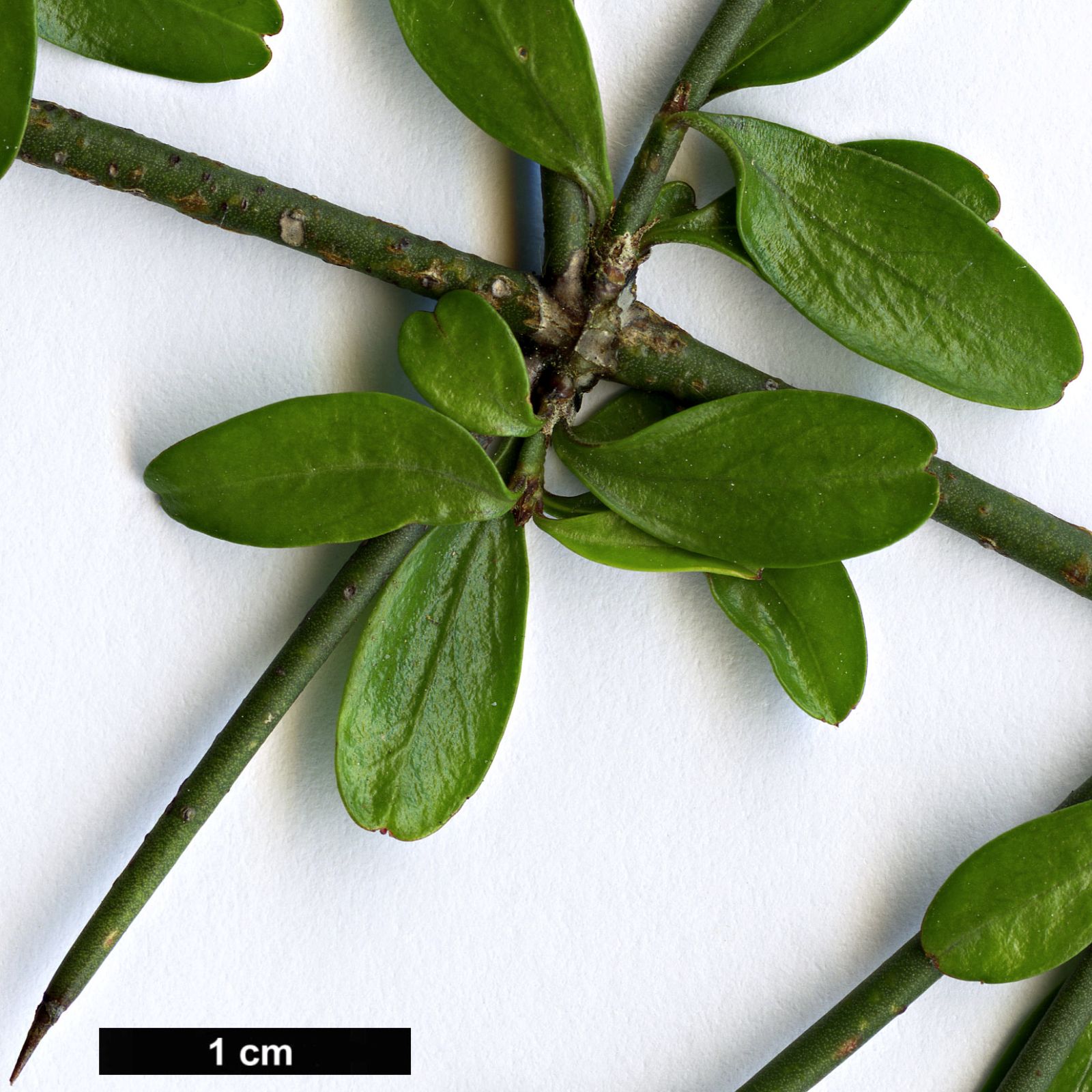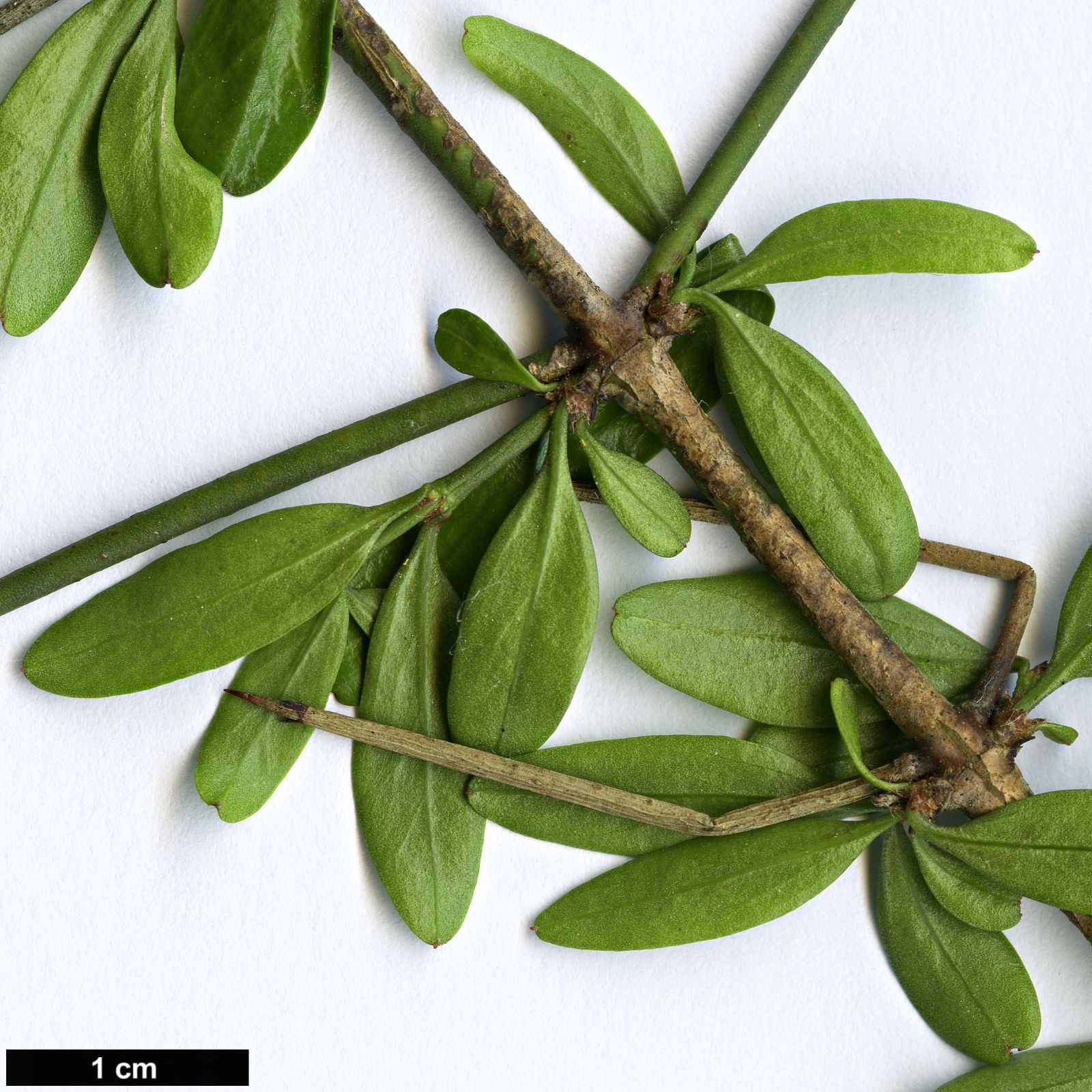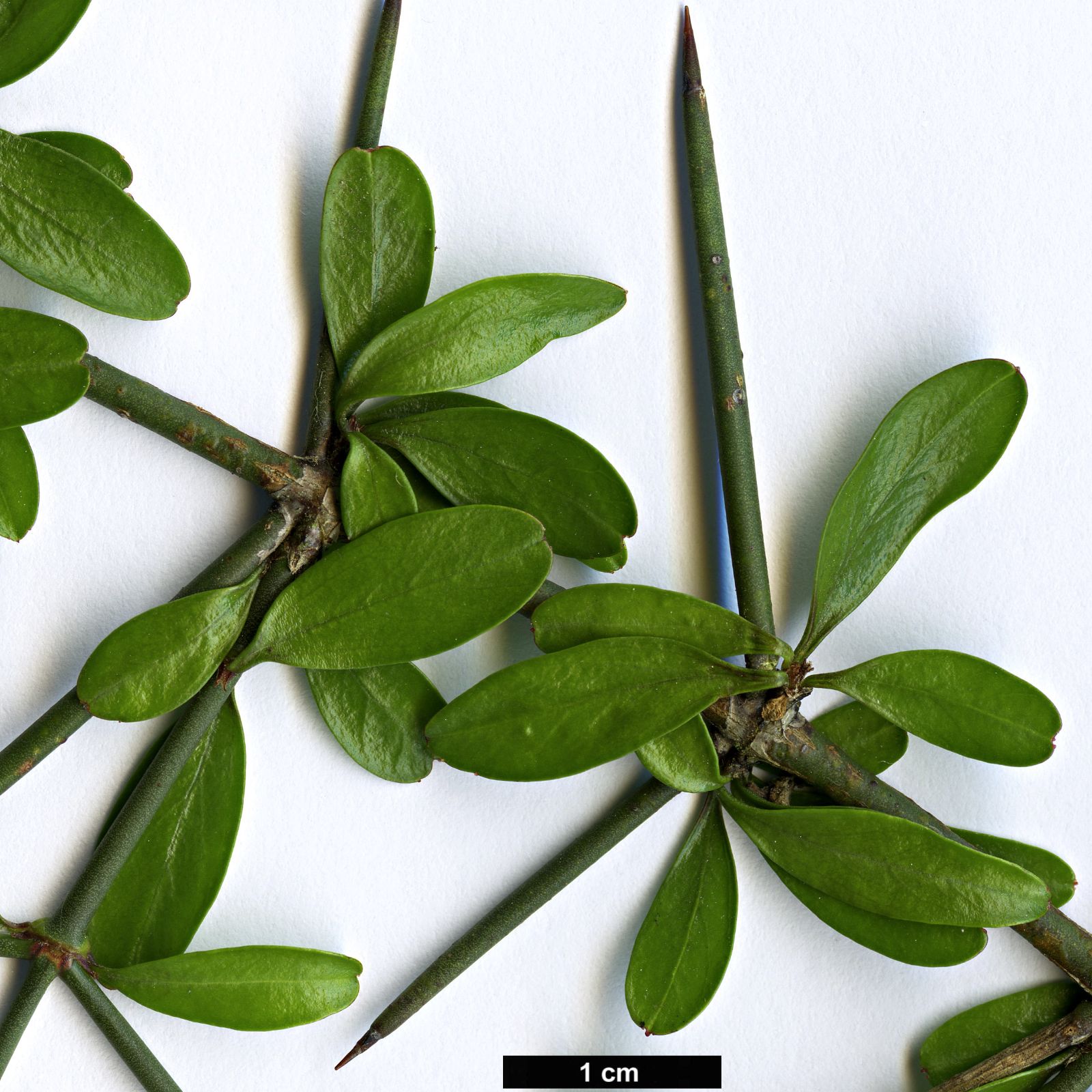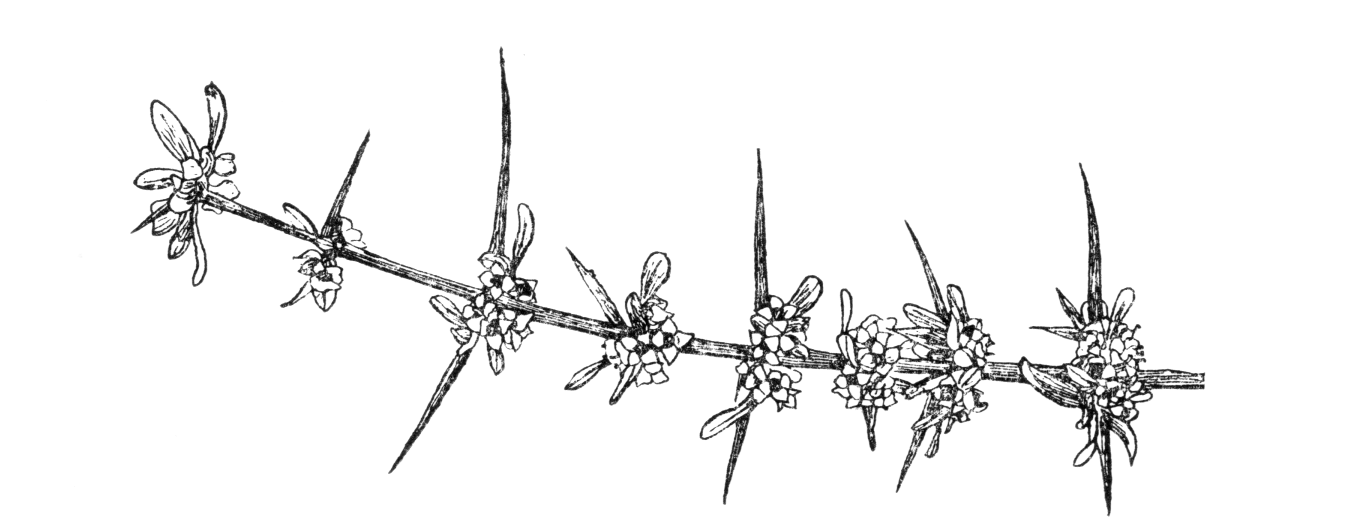Discaria toumatou
Credits
Article from Bean's Trees and Shrubs Hardy in the British Isles
Recommended citation
'Discaria toumatou' from the website Trees and Shrubs Online (treesandshrubsonline.
Genus
Common Names
- Wild Irishman
A deciduous shrub, varying in New Zealand from a low, scrubby bush 2 ft high, to a small tree 25 ft high, with long, slender, flexuous and exceedingly spiny branches. Spines 1 to 11⁄2 in. or even more long, opposite, sharply pointed, stiff, standing out from the branchlets at almost right angles. Leaves opposite on the shoots of the year, or in clusters beneath the spines on the year-old shoots, from 1⁄2 to 3⁄4 in. long, varying in shape from narrow oblong to obovate. Flowers greenish white, 1⁄6 in. across, produced very numerously in clusters along with the leaves; calyx with four or five lobes, petals absent. Fruit a round, three-valved capsule, 1⁄6 in. wide.
Native of New Zealand. This remarkable shrub is unfortunately too tender to thrive in the open at Kew, but succeeds very well against a south wall, where it flowers in great profusion every May. It is worth growing for its extraordinary spines, which are green and terete, and as thick as the shoot from which they spring. The leaves are sometimes absent on old plants. It is quite hardy in the Royal Horticultural Society’s Gardens at Wisley, where there is a specimen in Seven Acres some 8 ft high and 10 ft across – possibly a hardier form than the one grown at Kew.

